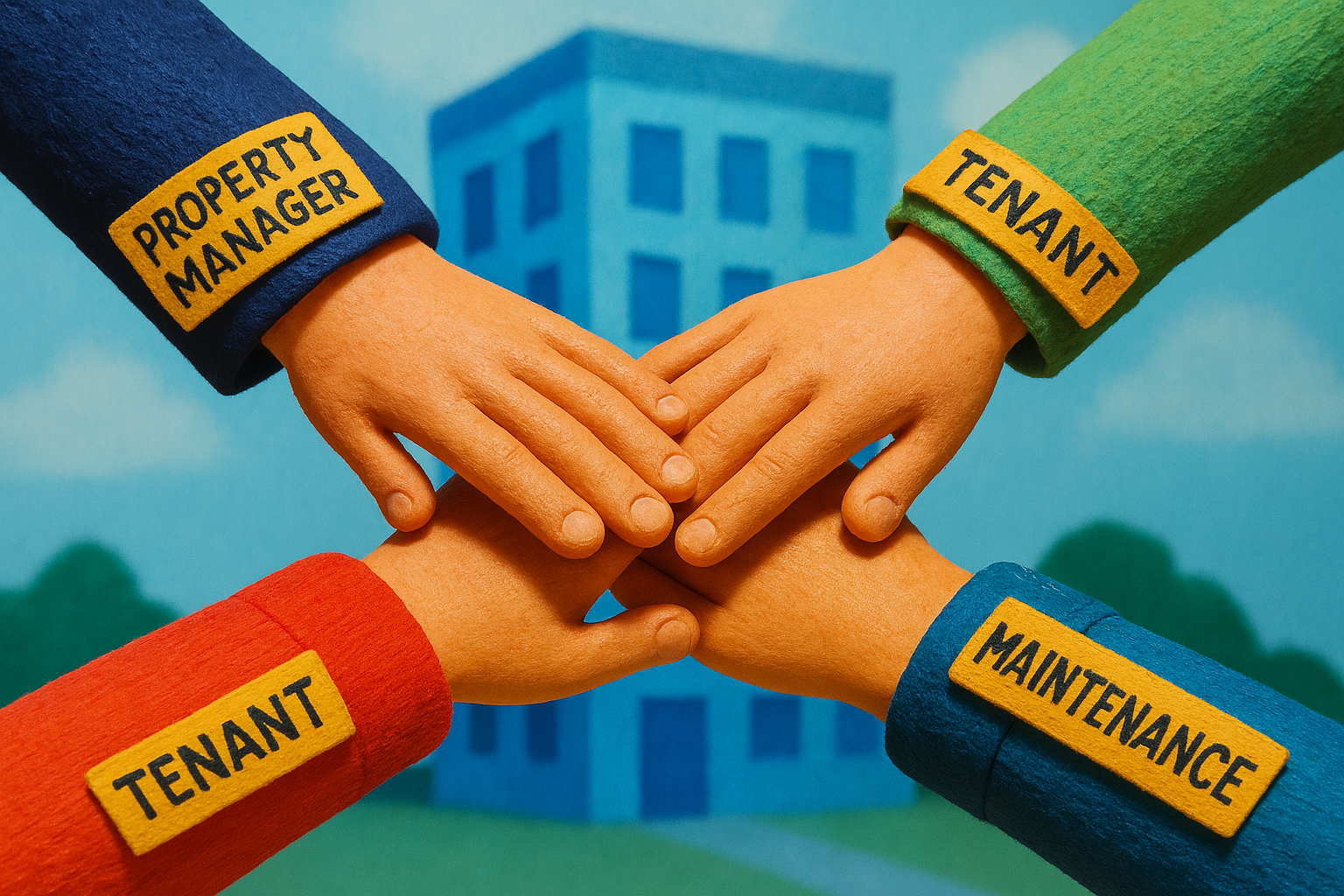Managing commercial real estate means juggling tenant expectations with the bottom line. As a property manager or owner, you want to keep tenants happy while ensuring every dollar spent on high-end tenant amenities pays off. In today’s competitive landscape, offering premium tenant amenities can boost your building’s appeal, but how do you balance the costs with the returns?
Why Tenant Amenities Matter for ROI
High-end tenant amenities aren’t just bells and whistles – they’re strategic investments. Modern tenants have rising expectations for their workplaces, shopping centers, labs, and warehouses. Meeting those expectations can directly impact your financial performance. For example, newer, amenity-rich office buildings often enjoy significantly higher occupancy and income than older buildings with few perks.
One study found that office properties with quality amenities in a major city generated about 2.5 times the NOI (net operating income) of older, non-upgraded buildings, and being amenity-rich was a key differentiator driving that success. In other words, offering the right amenities can set your property apart and prevent it from lagging behind. If you ignore tenant amenity trends while competitors embrace them, you risk higher vacancies and lost income.
That said, chasing every trend is not the answer. ROI (Return on Investment) is about ensuring the money you spend on amenities brings back value. It’s easy to imagine a “dream” building with every luxury, but you have to balance each amenity’s cost with its potential to attract or retain tenants and boost rents or occupancy.
For instance, adding an advanced fitness center might increase your expenses, but if it helps keep tenants longer or allows a rent premium, the investment can pay off. Always think in terms of value added: will this amenity meaningfully improve the tenant experience and make them willing to stay and pay? By focusing on amenities that align with your tenants’ needs, you set the stage for a positive ROI.
Keeping Tenants Happy and Long-Term
One of the biggest financial benefits of high-end amenities is improving tenant retention. Simply put, happy tenants stick around. When tenants renew their leases, you avoid the high costs of turnover – lost rent during vacancies, marketing, broker commissions, and build-out incentives for new tenants. Those turnover costs add up fast. In fact, replacing a commercial tenant can cost up to three times more than keeping an existing one, and it might take up to two years to recoup the lost income from a vacancy. Amenities that increase tenant satisfaction can dramatically reduce these risks.
How can you use amenities to boost retention? Start by thinking about what daily pain points or desires your tenants have and address them. In an office building, tenants might crave conveniences that make the workday easier or more enjoyable. For example, offering an on-site café or food hall saves employees time and becomes a social hub. In an office context, this translates to keeping workers (your tenants’ employees) happy and on-site, which your tenant businesses value. Similarly, a well-equipped fitness center or wellness rooms can support employee health. These amenities signal to office tenants that you care about their well-being, making them more likely to renew their lease in your building rather than look elsewhere.
For industrial properties, tenant retention is often tied to the tenant’s workforce satisfaction. Warehouse and manufacturing tenants can’t offer remote work, so the on-site environment matters for keeping workers motivated. By updating industrial buildings with things like comfortable break rooms, upgraded locker/shower facilities, or even outdoor seating areas, you help your tenants attract and retain their employees. That, in turn, makes those tenants more committed to your property. Consider creating clean, climate-controlled break areas or adding a small fitness room in a distribution center – if truck drivers, warehouse staff, or lab technicians feel taken care of, your tenant (the employer) will appreciate the value your building provides in employee retention. They’ll be far less likely to relocate when their lease is up because moving could mean losing those workforce perks.
Retail properties have their own retention angles. For retail centers, your “tenants” are store owners who care about foot traffic and shopper experience. High-end amenities like comfortable common areas, kids’ play zones, modern restrooms, or community event spaces can increase dwell time and customer satisfaction, directly benefiting your retail tenants’ sales. For instance, adding a small plaza with seating or a pop-up event space can draw in crowds and make shoppers stay longer. This helps your retailers prosper, so they’ll want to stay in your center.
In life science or tech lab buildings, tenants often look for collaborative environments to inspire innovation. Shared amenities like open lounge areas, conference centers, or even an on-site café where researchers from different companies can meet and mingle add huge value. These spaces foster a sense of community and even innovation among tenant companies. If scientists love the environment and cross-pollinate ideas there, tenants will be keen to remain part of your property’s ecosystem. Regularly survey your tenants about what amenities or services would make their lives easier. Showing that you listen and invest in their feedback builds loyalty and increases the chances they’ll renew leases year after year.
Competitive Differentiation: Standing Out with
Amenities
Beyond keeping current tenants, the right amenities make your property more competitive in the market. When prospective tenants are shopping around for space, whether an office user, retailer, lab, or logistics firm, they compare features. A high-end lobby, a tenant lounge, or advanced building facilities can be the X-factor that tips a decision in your favor. In a crowded urban office market, for example, a building with a modern collaboration space clearly stands out against a no-frills building.
Tenants perceive amenity-rich properties as “higher quality” and more professional. This competitive edge can help you maintain higher occupancy and even command premium rents. Industry data backs this up: investing in appealing amenities could be the difference between attracting a tenant at desirable rates versus seeing your occupancy rates drop. In other words, amenities can directly influence how easily you fill vacancies and how much rent you can justify.
Certain high-end amenities can even allow landlords to charge premium rents, as shown in an analysis of office buildings. In one study, features like a rooftop or sky terrace resulted in roughly a 5% rent premium, and outdoor courtyards and fully equipped fitness centers were not far behind. By contrast, basic conveniences (like a simple bank or ATM on-site) offered virtually no rent boost, indicating that not all amenities are equal in the eyes of tenants. This means you should focus on amenities that truly enhance the tenant experience or brand image of your property. A signature amenity – say, a state-of-the-art conference facility – not only differentiates your building but also gives you marketing bragging rights. You can highlight these features in listings and tours, making it easier to attract high-quality tenants willing to pay for a premium experience.
Competitive differentiation is important across all property types. Retail centers are learning to survive the e-commerce era by becoming experience centers. If your shopping center offers things like live event spaces, fitness classes, or interactive art installations, it can attract unique tenants (like specialty entertainment or eateries) and draw more visitors, which in turn attracts retailers.
Life science campuses differentiate by providing environments that top researchers and biotech firms want – think of amenities like secure 24/7 facilities, shared lab equipment areas, or connected office-lab collaboration zones. These extras could make a cutting-edge startup choose your building over a competitor’s. Industrial parks can stand out by catering to modern logistics needs: offering ample electric vehicle charging for transport fleets, extra trailer parking, or an on-site truckers’ lounge can set you apart from logistics tenants who have options.
Conduct a competitive amenities audit – tour other properties in your area or review their brochures. See what they offer and identify gaps or opportunities for your building. This research helps you strategize which high-end amenities will give you a true competitive edge (and avoid simply matching the status quo). Then, promote your amenities in all your marketing: make sure prospective tenants know the concrete benefits (e.g., “free fitness classes on-site” or “fast Wi-Fi throughout common areas”) that come with leasing in your property.
Balancing Costs and Benefits: Smart Amenity
Investments
Of course, every amenity comes with a cost. The key to maximizing ROI is making smart investments – choosing amenities that deliver the biggest bang for your buck and managing their costs wisely. Begin with a cost-benefit analysis for any major amenity upgrade. For example, if adding a tenant lounge with free coffee and Wi-Fi will cost you $50,000 a year to operate, consider how it might pay off: Will it enable you to lease space faster or reduce vacancies by enough to cover that $50K? In many cases, amenities pay for themselves through higher occupancy or slightly higher rents. But you want to run the numbers rather than assume. Calculate potential returns like increased rent per square foot or reduced months of vacancy and compare those to the ongoing costs of staffing, maintenance, or lost rentable space.
Keep in mind that some amenity investments may hurt your net operating income (NOI) in the short term (due to upfront costs or space taken out of revenue use) but are still worthwhile for long-term gains. For instance, converting a seldom-used storage room into a small fitness center means you’re not collecting rent on that space, which is a short-term hit. However, if that gym convinces a major tenant to renew for five more years, the long-term revenue secured far outweighs the initial sacrifice. Take a long-range view: consider the payback period of an amenity. Maybe that upgraded lobby with a coffee bar costs a lot now, but if it helps you avoid one big vacancy or attracts two new tenants over the next year, the investment could pay back in that time frame.
Before green-lighting an expensive amenity, create a simple ROI forecast. List all costs (construction, new equipment, additional cleaning, etc.) and list all expected benefits (higher retention, ability to lease faster, higher rent, less need for tenant improvement allowances because space is attractive as-is). Even if you have to use assumptions, this exercise will clarify if the idea makes financial sense or if you should scale it down.
Another way to control costs is to start small or phase in amenities. You don’t have to do everything at once. If you’re unsure about the impact, pilot an amenity program for a few months. For example, instead of building a full gym immediately, start with weekly yoga classes or a partnership with a nearby fitness center at a discount for your tenants. Gauge the interest and uptake. If you see strong engagement – say, many employees attending or tenants giving positive feedback – you have evidence to justify a larger investment. If not, you’ve learned with minimal expense. Similarly, you can design flexible spaces that serve multiple purposes, reducing the need to build separate facilities for every idea. A well-furnished tenant lounge could double as a casual meeting area, a co-working hub, or an event space when needed, delivering more value for the cost of one build-out.
Don’t forget to budget for upkeep. A high-end amenity is only high-end if it’s well-maintained. An elegant rooftop patio will quickly lose its luster (and ROI) if landscaping isn’t maintained or furniture wears out. Allocate funds for cleaning, repairs, and updates as part of your cost planning. Sometimes, sharing costs with tenants is feasible, too. For example, an office building could implement a fee-for-service model for an exclusive fitness club or conference center usage beyond a basic level. This way, the amenity is available, but heavy users contribute to its cost. Always communicate the value back to tenants: if you ever need to charge a small fee or slightly higher CAM (common area maintenance) charges to support an amenity, link it to clear benefits (such as “extended lobby hours” or “onsite security for the 24/7 lounge”). When tenants understand what they’re getting, they are more willing to share in the cost.
Evolving Tenant Expectations: Future-Proofing Your
Property
Tenant expectations are not static – they evolve with lifestyle trends, technological advances, and generational shifts. What was considered a luxury yesterday might be expected as standard today. For example, a few years ago, having Wi-Fi coverage in a building lobby or a touch-free hand sanitizer station might have been a “wow” factor; now it’s assumed. To sustain ROI on amenities, you need to anticipate and adapt to these changing demands. Staying ahead of trends helps protect your investment. If you implement amenities that tenants will be asking for in a year or two, you’ll be ahead of the curve and won’t scramble (or overspend) to retrofit later.
So, what are some evolving expectations in office, retail, life science, and industrial spaces? One major trend is a focus on health, wellness, and safety. Office tenants now expect healthy indoor environments – think high-quality air filtration, ample natural light, and touchless building systems – as part of the amenities package. Providing wellness rooms or outdoor green space for breaks can set your property apart as a forward-thinking property.
For life science and tech properties, collaboration and sustainability are rising priorities. Young companies want environments where their team can easily gather, brainstorm, and recharge. Amenities like open collaboration hubs, event spaces, or campus-style cafeterias help meet those needs.
At the same time, these tenants often have corporate mandates for sustainability. Green amenities (solar panels, energy-efficient systems, green roofs, bike storage, and showers to encourage biking to work) not only reduce operating costs but also appeal to the values of modern tenants. Installing EV charging stations, for instance, was once rare but is quickly becoming expected in office and industrial parking lots as electric vehicles proliferate.
An industrial warehouse built a decade ago might not have any employee amenities; now, as we saw, modern facilities boast break areas and even attractive outdoor spaces because tenants know it helps them win the “war for talent” in labor markets. To future-proof your property, regularly revisit your amenity offerings and ask: Does this match what tenants want today and tomorrow?
Stay informed on industry trends and engage with your tenants about the future. This could mean reading industry reports, attending local real estate workshops, or even observing popular features in other spaces. More directly, form a tenant committee or host an annual meeting with your major tenants to brainstorm improvements. You might learn that the biotech companies in your building are planning to add headcount and would really value an on-site childcare option in the next few years, or that the retailers in your center see demand for electric scooter parking areas.
By hearing these signals early, you can plan ahead and budget for the next high-impact amenity before it becomes urgent. Design flexibility into your spaces where possible – for example, a large unused storage area can be left unfinished but ready, knowing you could later convert it to whatever new amenity arises (a podcast studio? a VR demo room? who knows!). The goal is to make your building adaptable so it can accommodate new amenities with minimal cost when the time comes.
Measuring ROI and Success
To truly ensure that your high-end tenant amenities are worth the investment, you’ll want to measure their impact. Having data and feedback will let you adjust your strategy and also justify the expense to stakeholders. Start by defining what success looks like for each amenity. Is it higher tenant renewal rates? Higher occupancy? Increased rent per square foot? More foot traffic in a retail setting?
For example, if you launch a new tenant lounge, track usage rates (how many people visit daily). If it’s rarely used, find out why – maybe the design needs tweaking, or tenants need a different kind of space. On the other hand, if it’s often full, that usage is a good sign of value.
Combine usage data with direct feedback: you can send quick surveys asking tenants to rate their satisfaction with the new amenity. Positive responses (e.g., a majority saying the new conference center is very useful for their business) are qualitative proof that your investment is enhancing tenant experience.
Link the amenities to financial metrics as well. Monitor your property’s tenant retention rate year over year. If retention improves after adding amenities, that’s a strong indicator of ROI (especially if some tenants explicitly mention amenities as a reason for staying). Track leasing velocity for vacant spaces – do new listings get filled faster or with less free rent offered now that you have high-end features? Even rent growth can be a measure: perhaps after renovating and adding amenities, you were able to push rents from, say, $30 to $32 per square foot and still attract tenants.
You can attribute that premium to the improvements (make sure to note these outcomes in your asset management reports). If you operate retail, watch sales numbers or foot traffic counts in common areas, if available; an uptick after introducing, for instance, a weekly live music night in your plaza suggests the amenity is drawing more visitors, which benefits tenants. In industrial properties, if your tenant’s employee turnover drops (they might share that info), part of that could be the nicer on-site conditions you provided – an indirect but powerful ROI since that tenant is now more likely to renew.
Create a simple “amenity ROI dashboard” for your property. It could be a spreadsheet or just a short report you update quarterly. Include metrics like occupancy rate, average lease duration, tenant satisfaction survey results, and any anecdotal testimonials from tenants about the amenities. Also, track the costs associated with each amenity (initial outlay and ongoing expenses).
This will help you see the relationship between what you’re spending and the value you’re getting. If an amenity isn’t pulling its weight, you can strategize to improve it or repurpose it. If it’s exceeding expectations – great, consider investing further in that area or applying the concept to other properties in your portfolio. By measuring results, you take the guesswork out of amenity ROI and make it a calculated aspect of your property management strategy.
A Balanced Approach to Amenities and ROI
Offering high-end tenant amenities is a powerful way to improve your property’s performance, but it works best when done thoughtfully and strategically. Always approach amenities with a balance in mind: tenant experience on one side and financial sustainability on the other. As we’ve discussed, amenities can directly reduce costly turnover, attract high-paying tenants, and keep your property competitive even in tough markets.
They can differentiate a Class A building from the pack or breathe new life into an older asset. The returns are real, from higher occupancy and rent premiums to intangible benefits like stronger tenant relationships and property reputation.
The key is to invest wisely. Know your tenants and what they value, focus on amenities that deliver visible benefits, and keep an eye on both upfront costs and long-term gains. Use the tips – like tenant surveys, competitive audits, phased implementations, and ROI tracking – to guide your decisions.
This way, you’re not just adding amenities for the sake of it; you’re building a targeted amenity program that supports your tenants’ success and your own success as an owner/manager. Remember, your goal is to create a place where tenants want to stay, and businesses can thrive, all while ensuring the financial health of your property. With a balanced, ROI-conscious approach to high-end tenant amenities, you can turn your building into a win-win environment – delightful for tenants and profitable for you.
Balancing cost and ROI for high-end tenant amenities becomes much easier when your property operations and tenant experience are aligned on one centralized platform. Commercial property management software like Cove simplifies the complexity of managing urban office, retail, life science, and industrial properties by bringing operations and amenities together in a seamless, user-friendly interface.
With Cove, you gain clear insights into amenity usage, tenant satisfaction, and operational efficiency, enabling smarter investments that truly enhance tenant experience and property performance. When you combine strategic amenity planning with Cove’s integrated approach, you’re positioned to deliver exceptional tenant value while optimizing your bottom line.

.png)





